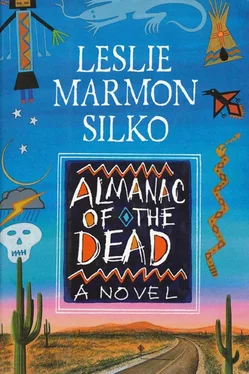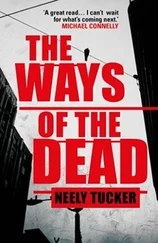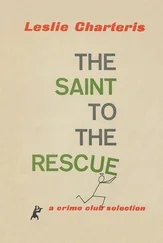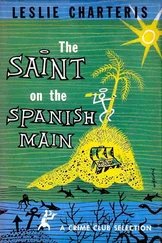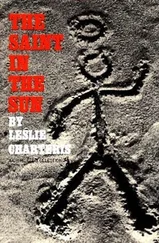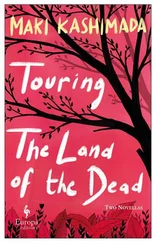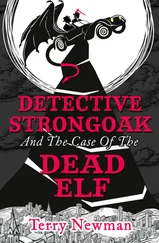1776
Bucks County, Pennsylvania: Black slaves rise up to aid British.
1778
Albany, New York: “Tom” arrested again for stirring up minds of Negro slaves against their masters.
1782
Spanish Louisiana: Rebellious “maroons” and Negroes led by one “St. Malo” make trouble for whites.
1786
Savannah River, Georgia: Negro slaves calling themselves “soldiers of the King of England” carry on guerrilla warfare from a stockaded village in Bell Isle swamp.
1791
Santo Domingo (Haiti): Successful black slave uprising. News does not reach U.S. slaves for a year or two.
1791
Western Virginia: Indians defeat General St. Clair and unrest stirs among black slaves while militia is gone fighting Indians.
1793
North Carolina: Cherokee Indians fight whites and black slaves threaten to rise up.
1793
Richmond, Virginia: Black slaves discuss successful rebellion in Santo Domingo.
Charleston, South Carolina: Mysterious fires sweep the city, and black slave unrest is blamed on revolt in Santo Domingo.
1796
Massive sell-off of black slaves by white masters such as Thomas Jefferson and George Washington due to economic hard times.
1797
Charleston, South Carolina: Three black slaves executed for “plots” and arson.
1800
Denmark Vesey buys his freedom. Nat Turner is born. John Brown is born.
1800
Henrico County, Virginia: “Gabriel,” slave of T. Prosser, leads a conspiracy.
1804
New Orleans: Slaves are restless and cruelly punished during war between France and Spain.
1804
Philadelphia: Whites attack blacks, but blacks rally together shouting, “Show them Santo Domingo!”
1810
Virginia: Slaves rise up and kill four whites.
1811
St. John and St. Charles Parish, Louisiana: Charles Deslondes, a free mulatto from Santo Domingo, leads a rebellion of black slaves.
1812
War with England stirs up slave unrest.
1813
Washington, D.C.: When British are near, black slaves rebel.
1815
Maryland, Virginia, South Carolina, Louisiana: Widespread unrest among black slaves.
1819
Florida, a Spanish territory, is “annexed” by the U.S. to wipe out nests of hostile Indians and runaway slaves who use Florida as a base camp for guerrilla raids on plantations across the border.
1819
Severe droughts and starvation in Virginia and South Carolina lead to numerous slave revolts.
1822
Charleston, South Carolina: Denmark Vesey’s plan for a Great Revolt is betrayed. Vesey was counting on aid from blacks in Haiti and in Africa. Of 131 black slaves arrested, 38 were hanged.
1826
Louisville: Seventy-seven slaves being transported by five white men rise up, kill the slave traders, and escape.
1828
Richmond, Virginia: Nat Turner hears the voice of God tell him he must lead his people to rise up when the signs come from God.
1829
Virginia: Free-born Negro Christian Tompkins writes pamphlet foretelling the coming of a mulatto savior who is huge, bearded, and invincible and comes from Grenada to destroy slavery in the U.S.
1829
Slaves bound for sale in New Orleans from Norfolk rebel and only after great struggle are controlled.
1829
Rains in Louisiana damage crops and cause famine and slave revolts.
1830
David Walker, a free man, publishes his “Appeal,” which Nat Turner may have read.
1831
The signs from God come and Nat Turner leads a slave rebellion in Southampton County during which fifty-seven whites are killed. Hundreds of black slaves are killed without trials across the U.S. as whites panic and give way to hysteria.
1835
Texas: Black slaves escape and join Mexican forces against Texans.
1846
Pensacola, Florida: Martial law declared after slave rebellion plans revealed.
1861
Arkansas: Slaves rise up and kill enslavers on July 4.
1862
Richmond, Virginia: Slave named Bob Richardson executed for plotting uprising.
1862
Yazoo City, Mississippi: Slaves rise up and burn courthouse and homes of fourteen whites.
Clinton knew racism had made people afraid to talk about their Native American ancestors. But the black Indians would know in their hearts who they were when they heard Clinton talk about the spirits. The people had to be reminded that the spirits were all around, and the tribal people torn from Mother Africa had not been deserted by the spirits. Rather the people had deserted the spirits; overwhelmed by their losses, the people had no longer prayed or believed because they blamed the spirits for their slavery on alien soil.
Clinton was heading for the remote mountains in Haiti. He didn’t care if everyone was dead and all traces were gone. He wouldn’t be surprised. The white man and white-man imitators had tried to destroy all traces of the mighty spiritual forces that had united in Haiti’s mountains five hundred years ago. Clinton just wanted to set his feet on the soil where the spirits of three continents had been manifested, where the first black Indians had been born and their descendants had triumphed against the French fleet.
Clinton suspected many African Americans secretly grieved for the spirits they believed had been lost or left behind in Africa centuries before. That would be his main work, to explain to the people that many of the African spirits also inhabit the Americas too. Clinton reclined his seat after take-off from Tucson International Airport. He didn’t bother to look down or say adiós because he knew he’d be back. Nothing could be black only or brown only or white only anymore. The ancient prophecies had foretold a time when the destruction by man had left the earth desolate, and the human race was itself endangered. This was the last chance the people had against the Destroyers, and they would never prevail if they did not work together as a common force.
Clinton had promised the Barefoot Hopi he would spread the word among the brothers and sisters in the cities. He would tell them to prepare; a day was coming when each human being, man, woman, and child, could do something, and each contribution no matter how small would generate great momentum because they would be acting together. The Barefoot Hopi’s plan called for a nationwide jail and prison uprising to be triggered by the execution of a prisoner or the outbreak of riots in the cities. The people had to make their moves while the police and military were busy trying to put down the prison riots. Once the people had hit the streets, the authorities would call military and police units back into the cities to protect the government from the people. The secret was for the people to park themselves smack in the middle of the rich man’s backyard, so any firebombing the city police did would burn out the rich man for a change. At this stage the people would suffer immense casualties; the government would firebomb the crowds of angry citizens as they marched from the ghettos down Madison Avenue, State Street, and Sunset Boulevard.
Clinton had talked with brown people, mostly women, because so many men were sick or dead. Talk about casualties and all you got was laughter, jokes, and more laughter. Two hundred or three hundred dead from police bullets or firebombs? That was funny! Hundreds more of the people died every year from starvation and its complications, which were slow and painful. They weren’t afraid to die. Clinton had heard it said again and again, mainly by the women. Black women, Hispanic women, white women, homeless with starving children; they all said they’d rather fight. They’d rather burn down the city, take a police bullet, and die quick, because that way they died fighting, they died warriors, not slaves.
Roy was going to lie low until cooler weather came, maybe contact camps of eco-warriors in the mountains of Montana or go to the homeless veterans’ camps Clinton had visited in the winter. Roy had a scheme for a big November Veterans Day celebration. All over the country, Roy hoped to persuade homeless veterans to contact local authorities for permission to build authentic firebase camps to show the public. The scheme called for the model firebase camps to be built just outside military bases where Veterans Day activities were held.
Читать дальше
